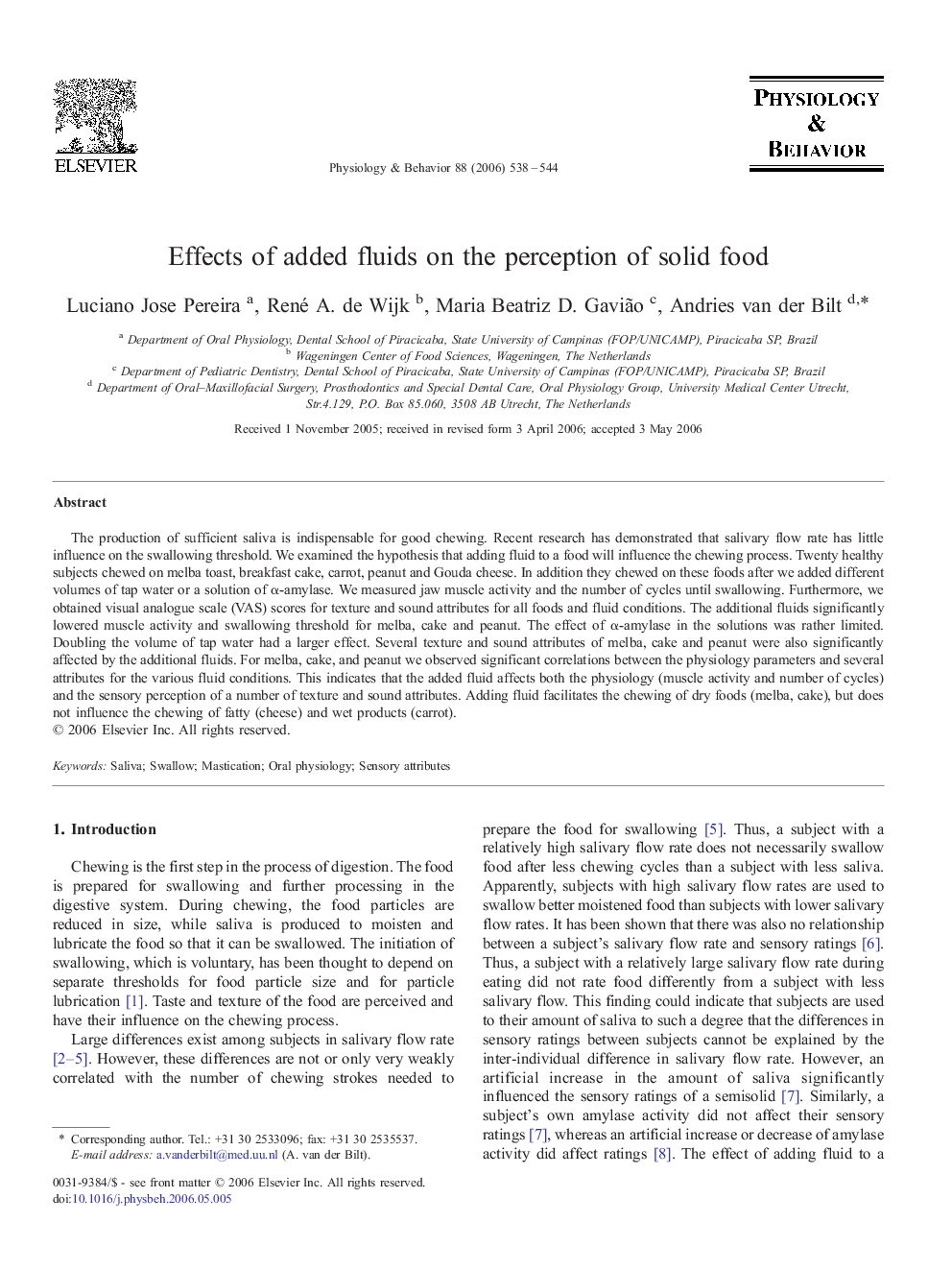| Article ID | Journal | Published Year | Pages | File Type |
|---|---|---|---|---|
| 2846256 | Physiology & Behavior | 2006 | 7 Pages |
The production of sufficient saliva is indispensable for good chewing. Recent research has demonstrated that salivary flow rate has little influence on the swallowing threshold. We examined the hypothesis that adding fluid to a food will influence the chewing process. Twenty healthy subjects chewed on melba toast, breakfast cake, carrot, peanut and Gouda cheese. In addition they chewed on these foods after we added different volumes of tap water or a solution of α-amylase. We measured jaw muscle activity and the number of cycles until swallowing. Furthermore, we obtained visual analogue scale (VAS) scores for texture and sound attributes for all foods and fluid conditions. The additional fluids significantly lowered muscle activity and swallowing threshold for melba, cake and peanut. The effect of α-amylase in the solutions was rather limited. Doubling the volume of tap water had a larger effect. Several texture and sound attributes of melba, cake and peanut were also significantly affected by the additional fluids. For melba, cake, and peanut we observed significant correlations between the physiology parameters and several attributes for the various fluid conditions. This indicates that the added fluid affects both the physiology (muscle activity and number of cycles) and the sensory perception of a number of texture and sound attributes. Adding fluid facilitates the chewing of dry foods (melba, cake), but does not influence the chewing of fatty (cheese) and wet products (carrot).
